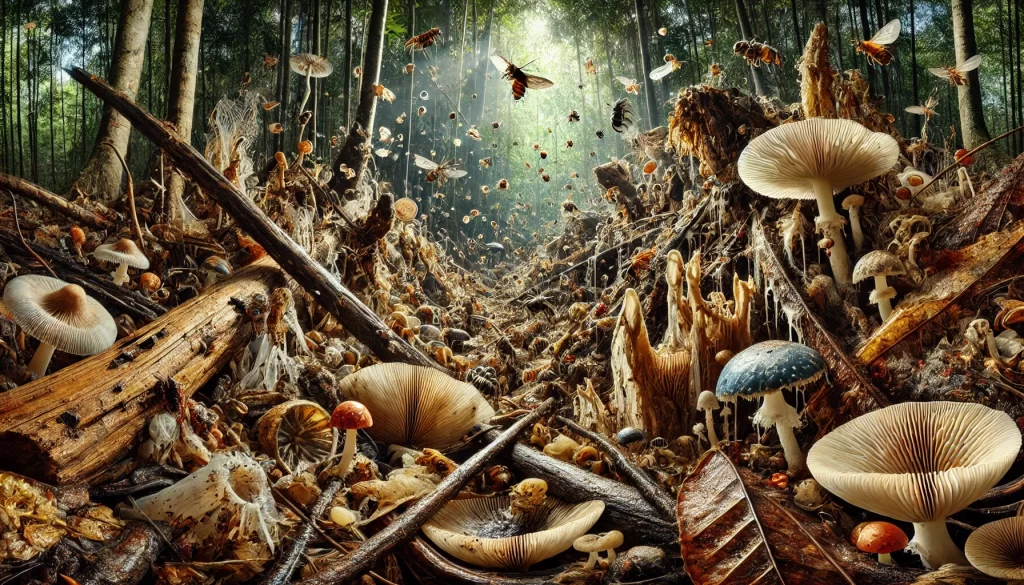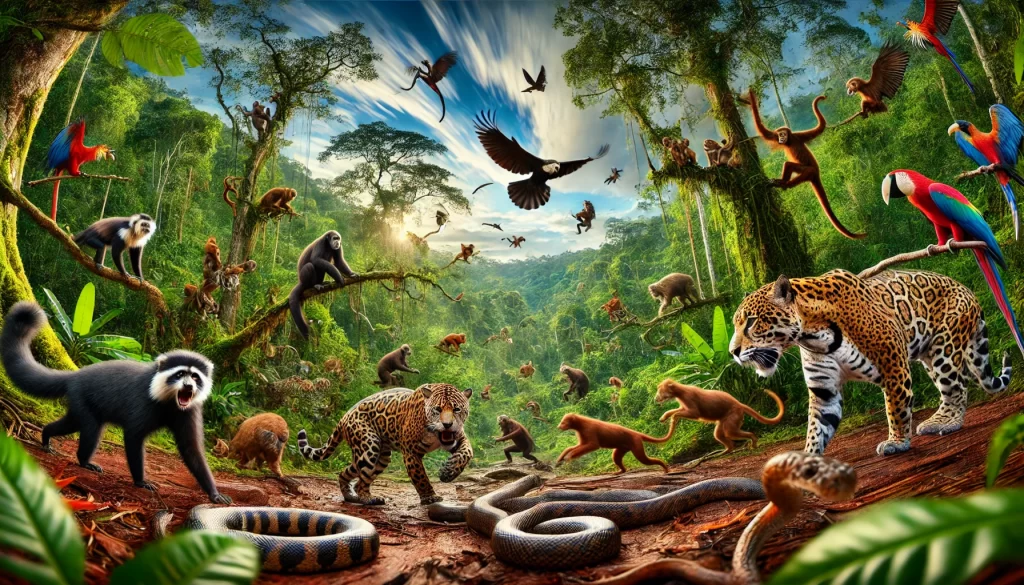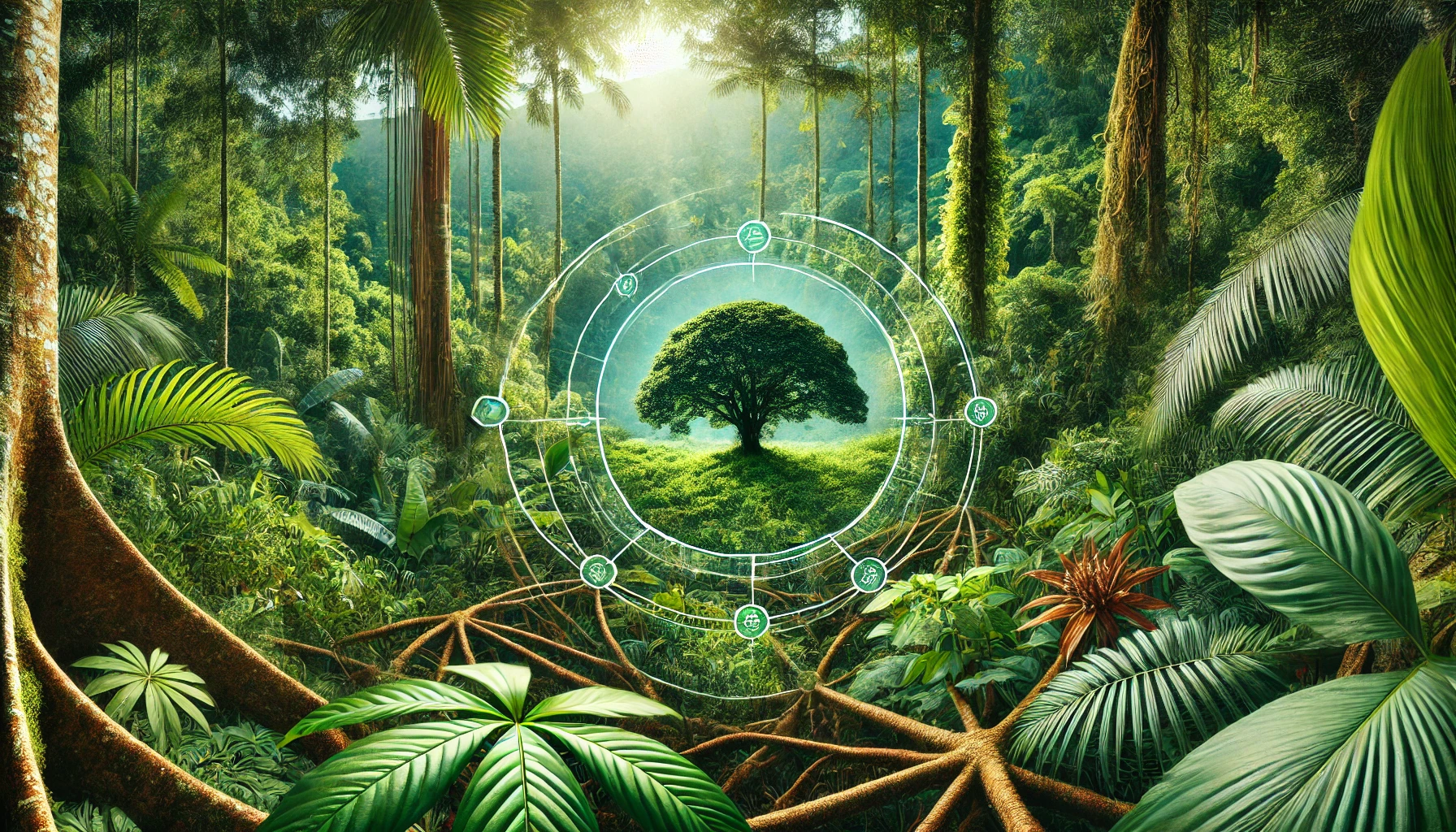Table of Contents
The food web of a tropical rainforest is a complex and fascinating network of life, where every creature plays a vital role in maintaining the balance of this lush ecosystem. From the tiniest insects to the largest predators, the relationships between these organisms are intertwined in ways that might surprise you. In this article, we will dive deep into the hidden survival mysteries of the tropical rainforest’s food web, uncovering how life thrives in one of the most diverse environments on Earth.
What is a Food Web?

An ecosystem’s network of connected food chains is called a food web. Unlike a single food chain, which follows a linear path from a primary producer (like a plant) to a top predator, a food web shows the many paths energy and nutrients take as they move through different organisms. In the food web of a tropical rainforest, this web is incredibly intricate, reflecting the vast diversity of species that inhabit these rich ecosystems.
Primary Producers: The Foundation of the Food Web
The primary producers are at the base of the food web of a tropical rainforest. These plants, trees, and algae capture energy from the sun through photosynthesis. Without these producers, there would be no life in the rainforest. The towering trees, vibrant ferns, and creeping vines that characterize the tropical rainforest all contribute to this critical foundation. These plants provide food, shelter, and habitat for countless species.
Primary Consumers: The Herbivores
Moving up the food web of a tropical rainforest, we find the primary consumers or herbivores. These animals eat the plants and transfer their energy to the next level of the web. Some common herbivores in tropical rainforests include insects like caterpillars, large mammals like tapirs, and various species of birds. These creatures play a crucial role in the ecosystem by keeping plant populations in check and providing food for the next level of consumers.
The Role of Insects in the Food Web
Insects are among the most numerous and vital creatures in the food web of a tropical rainforest. They consume plant material, pollinate flowers, and serve as prey for many other animals. Ants, beetles, and butterflies are just a few examples of the insects that are integral to the survival of this ecosystem. Without them, the delicate balance of life in the rainforest could be disrupted.
Secondary Consumers: The Carnivores and Omnivores

Next in the food web of a tropical rainforest are the secondary consumers. These are the carnivores and omnivores that eat the herbivores. This group includes predators like jaguars, ocelots, snakes and omnivores like monkeys and certain birds. These animals help control the populations of herbivores, preventing any species from becoming too dominant and disrupting the balance of the ecosystem.
Predators and Their Prey
In the food web of a tropical rainforest, predators play a crucial role in maintaining the ecosystem’s health. They keep the populations of herbivores in check, which helps preserve the plant life that forms the food web base. For example, jaguars, one of the top predators in the rainforest, hunt animals like capybaras and peccaries. Without these predators, the rainforest could quickly become overrun by herbivores, leading to a decline in plant diversity and overall health.
Decomposers: The Recyclers of the Rainforest
At the end of the food web of a tropical rainforest are the decomposers. These organisms, such as fungi, bacteria, and insects, break down dead plants and animals, returning essential nutrients to the soil. This process is vital for the health of the rainforest, as it ensures that the nutrients are recycled and made available for the primary producers. Without decomposers, the rainforest would be overwhelmed with organic matter, and the life cycle would be interrupted.
The Importance of Fungi
Fungi are some of the most important decomposers in the food web of a tropical rainforest. They break down dead wood, leaves, and other organic material, converting it into nutrients that plants can absorb. This process clears the forest floor and enriches the soil, allowing the rainforest to continue to thrive. Fungi also form symbiotic relationships with the roots of plants, further contributing to the health and growth of the forest.
The Interconnectedness of the Food Web
One of the most fascinating aspects of the food web of a tropical rainforest is how interconnected it is. No matter how small, every species plays a role in the ecosystem’s survival. The loss of a single species can have a ripple effect, impacting other species and potentially leading to a breakdown of the entire food web. This interconnectedness makes the tropical rainforest resilient yet vulnerable to changes, whether they come from natural events or human activities.
Also Read: How Long Does Freeze Dried Food Last? The Astonishing Answer!
Human Impact on the Food Web
Unfortunately, the food web of a tropical rainforest is increasingly threatened by human activities. Deforestation, pollution, and climate change all pressure these delicate ecosystems. When trees are cut down, the primary producers are removed, and the entire food web can collapse. Similarly, when animals are hunted, or habitats are destroyed, the food web balance is disrupted, leading to a decline in biodiversity.
The food web of a tropical rainforest is a marvel of nature, showcasing the intricate relationships between countless species. From the towering trees that form the web base to the top predators that keep populations in check, every creature plays a vital role in maintaining the health of the rainforest. As we uncover the hidden survival mysteries of this complex system, it’s clear that preserving these ecosystems is crucial for the health of our planet. By understanding and protecting the food web of a tropical rainforest, we can help ensure that these vital ecosystems continue to thrive for generations to come.

